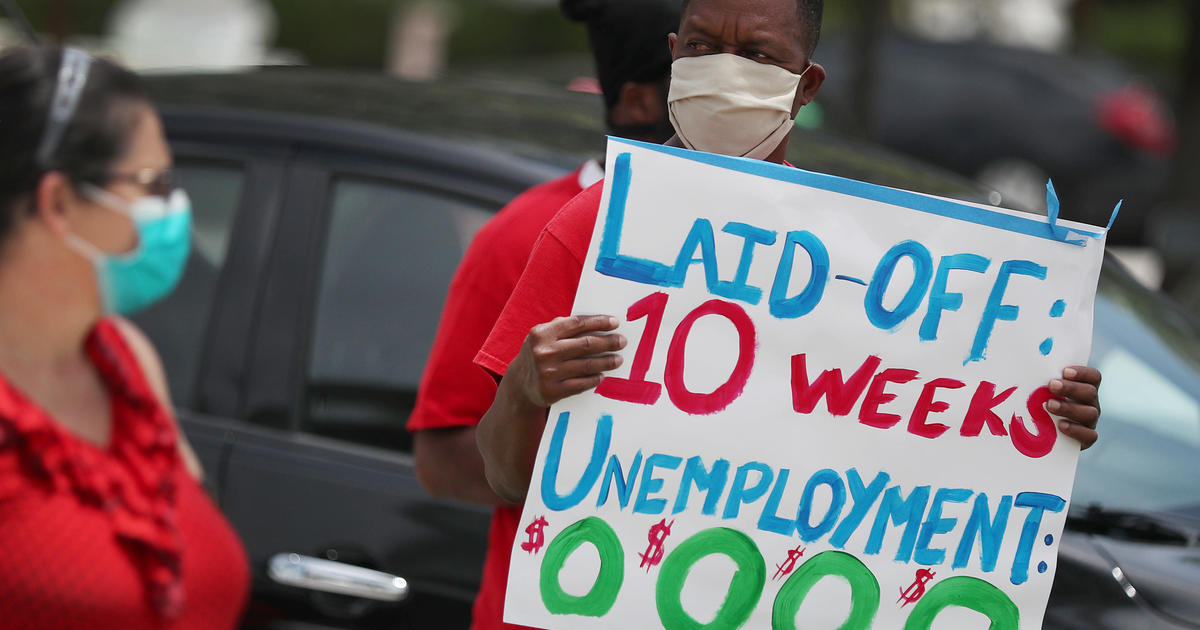President Donald Trump on Saturday authorized an extra $400 in weekly unemployment insurance benefits, a potential financial lifeline for the nation’s 16.3 million jobless workers. Yet while his memorandum makes those payments retroactive to August 1, the money could take weeks to reach people and amount to less than advertised for some claimants.
Mr. Trump’s efforts to partially restore the supplemental benefits, which expired late last month, means that states will need to set up new systems for administering the benefits, which could require considerable time to get up and running, according to unemployment experts. The upshot: Unemployed workers shouldn’t count on the extra benefits landing in their bank accounts in the next few weeks.
Some states also may not have the funding to provide 25% of the benefit, as proposed. That could see the aid sliced to $300 a week, half the extra weekly payment workers had been receiving until the end of July through the CARES Act.
To be sure, any extra financial help would help the millions of Americans who have lost their jobs and are struggling to find new employment. But the complexity of the unemployment system — combined with the political and legal uncertainties around Mr. Trump’s end-run after Congress failed to agree on a new stimulus package last week — have opened a range of questions about the White House initiative.
“That is the tragedy — workers are expecting to get this because the president promised it to them,” said Michelle Evermore, senior policy analyst at the National Employment Law Project, an advocacy group. “It’s going to be a real challenge for states to say they can get this up and running.”
States would likely have to set up new systems for administering the aid, as the federal portion will stem from $44 billion in funds allocated for natural disaster relief. States can’t use their current unemployment systems for benefits authorized outside of Congress, NELP notes.
Here’s what else you should know about Mr. Trump’s move to jump-start the effort to funnel extra unemployment aid to Americans:
When will I get the extra $400?
Don’t expect to receive the extra jobless benefit this month, said Andrew Stettner, senior fellow at The Century Foundation, a progressive think tank. Because states need to build a new system to administer the money, they might not be able to distribute the funds until September, he said.
“We’re lucky if anyone gets this money in August,” Stettner said. “It’s more likely to be in September at the earliest.”
Already, some unemployed workers are posting queries on social media about when they might get the extra aid, pointing to Mr. Trump’s memo stating it will begin on August 1 for those who qualify. Instead, jobless Americans will most likely receive back payments going back to August 1 once the program starts up, Stettner said.
How long will the $400 payments last?
Mr. Trump’s plan would fund the extra unemployment benefits by tapping $44 billion from the nation’s Disaster Relief Fund. That is enough for four or five weeks, according to Raymond James analyst Ed Mills.
What happens if my state can’t provide funding?
This is one of the biggest questions regarding Trump’s directive, which states that the federal government will provide $300 in additional aid and the states will contribute another $100.
Some governors have already said the $100 per-person contribution is beyond reach, with Gov. Andrew Cuomo of New York calling it “impossible.” That’s because many states are already financially strapped due to a loss of tax revenue after the coronavirus pandemic shuttered the economy.
Trump’s order specifies that the state funding would come from the $150 billion Coronavirus Relief Fund (CRF), but some states have already spent or earmarked that money.
Executive Orders can’t replace legislative actions.
States can’t pay 25% of unemployment costs.
It’s simply impossible.
— Archive: Governor Andrew Cuomo (@NYGovCuomo) August 9, 2020
“For many states, the remaining funds in the CRF would be sufficient to pay the state share of benefits,” Goldman analysts wrote in a research note. “However, some states have already used most or, in the case of California, all of their CRF allocation, which would leave them to fund the benefit from other state resources.”
States have another option, according to a Sunday memo from the Department of Labor viewed by CBS MoneyWatch. They can “count their existing unemployment insurance (UI) weekly benefit payments from state funds” toward their $100 contribution, the memo said.
“It appears if you are getting state unemployment benefits that are at least $100, you should be able to get that $300 on top, even if your state can’t put up the additional $100,” Stettner said.
In effect, workers in those states will receive only an extra $300 on top of their regular unemployment benefits, rather than the expected $400, he noted.
Who won’t qualify for the extra benefits?
Jobless workers who receive less than $100 a week in unemployment pay aren’t eligible for the additional $400 in aid authorized by Mr. Trump.
That’s attracting criticism from experts who say it will hurt the workers who need the most help — low-paid workers such as waiters and gig economy workers who might not qualify for higher unemployment payments.
“It’s affecting those at the bottom of the income spectrum, or in the gig economy,” Stettner said. “They have the least to get by — and won’t get anything.”
